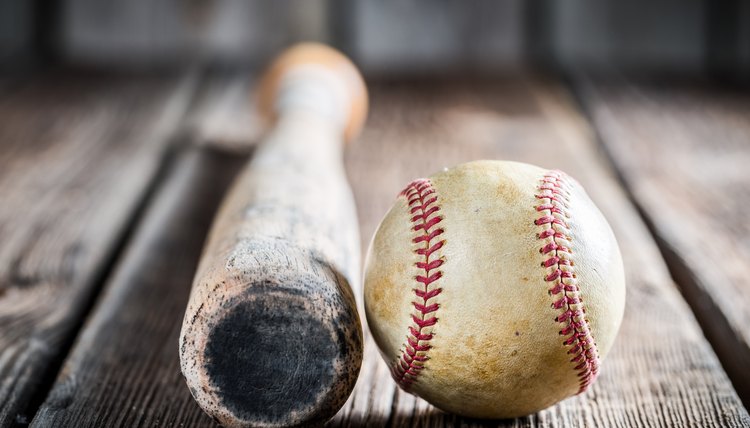Men's Slow-pitch Softball Practice Drills

Slow-pitch softball is taken seriously by its players. Playing well means improving on your skills and even learning a few new ones.You and your team-mates can easily perform several drills that will improve hitting and fielding prior to playing in your regularly scheduled games.
Quick-swing Drill
Softball and baseball coaches preach the importance of a quick swing no matter what level they play at. A quick swing gives the batter increased bat head speed through the hitting zone and create more power, which is essential in men's slow-pitch softball. In order to develop a compact and productive swing, stand with your back foot against a fence or wall. Drop your hands down to begin your swing. If your bat drags against the fence or wall, you have a long swing that needs to be corrected. If the bat stays more vertical and does not drop down into the hitting zone until you have cleared the fence or wall, you have a quick swing that generates power. This drill gives the hitter instant feedback and help the hitter develop quicker hands.
Two-ball Drill
One of the keys to hitting consistently in slow-pitch softball is recognizing pitch location. In many cases, the pitch that is at belt level or higher can be hit in the gaps or over the fence for a home run. In this drill, a teammate or coach stands about five feet to the side of the batter. The coach tosses two softballs up in the air at the same time. The hitter must pick out the higher ball and drive that one while letting the low pitch go. This helps the hitter to have recognition at the plate and it will make for a more consistent batting swing.
Cone Drill
Fielding is one of the most underappreciated aspects to slow-pitch softball. Many slow-pitch games are high-scoring slugfests, and many people believe that the team with the most sluggers will win the game. However, team defense is also vital. Teams that don't make plays and give their opponents extra outs often find themselves on the losing end even if they have several sluggers. In this drill, outfielders work on catching the ball and getting rid of it quickly and accurately. The outfielder is stationed in the middle of four cones in a 20-yard area. A teammate will throw a high fly ball in that area. The outfielder must catch the ball and throw it to the cutoff man, who will be 80 to 100 feet away. In order to make this drill work effectively, time the outfielder to let him know how long it takes for the ball to go from his glove to the infielder who is catching the cutoff throw. This leads to improved overall defense.
Writer Bio
Steve Silverman is an award-winning writer, covering sports since 1980. Silverman authored The Minnesota Vikings: The Good, The Bad and The Ugly and Who's Better, Who's Best in Football -- The Top 60 Players of All-Time, among others, and placed in the Pro Football Writers of America awards three times. Silverman holds a Master of Science in journalism from the Medill School of Journalism.
